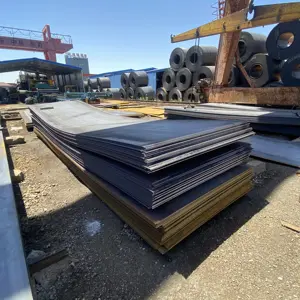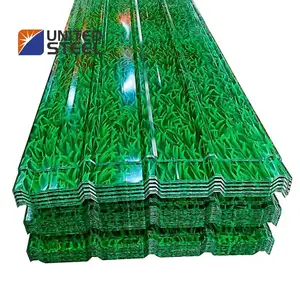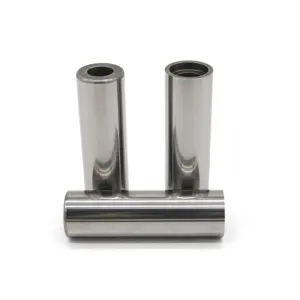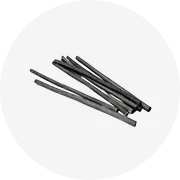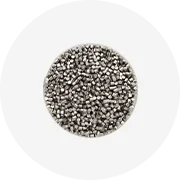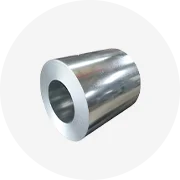Popular en tu industria






Clip de cable clavos de hormigón círculo de clip de cable 4mm
EUR 4.64 - EUR 4.92
Pedido mínimo: 50 bolsos






Abrazadera de fijación de Cable, abrazadera de Cable de Clip de alambre de plástico, abrazadera de Cable eléctrico
EUR 8.11 - EUR 8.49
Pedido mínimo: 10 bolsos







Venta caliente Material eléctrico Abrazadera de varilla de puesta a tierra Abrazadera de protección contra rayos de latón Abrazadera de puesta a tierra
EUR 0.3708 - EUR 7.42
Pedido mínimo: 100 conjuntos






TANHO TTD ABC cable ignífugo 25-95 mm2 conectores de punción de aislamiento eléctrico 1KV abrazaderas aisladas para perforar
EUR 0.6026 - EUR 0.7324
Pedido mínimo: 100 piezas







Lámparas térmicas de 7mm para todas las estaciones, accesorio para sujetar cables
EUR 0.1391 - EUR 0.2781
Pedido mínimo: 1 bolso







Abrazadera de manguera de fijación de tubería de acero galvanizado de alta resistencia Abrazadera de manguera tipo perno en T
EUR 0.0464 - EUR 0.0742
Pedido mínimo: 500 piezas

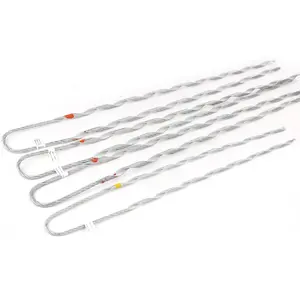





Abrazadera de tensión de extremo muerto de guy grip preformado de alambre de acero revestido de aluminio para ADSS 8-14mm
EUR 1.86 - EUR 19.47
Pedido mínimo: 50 piezas






Abrazadera de alambre de agarre Guy para Cable óptico de fibra, aleación de aluminio, extremo muerto
EUR 1.86 - EUR 2.79
Pedido mínimo: 1 pieza






Abrazadera de ajuste preformada, accesorios de Cable, abrazadera de Cable Guy de extremo muerto helicoidal preformada para Cable de suspensión
EUR 7.31 - EUR 24.07
Pedido mínimo: 200 conjuntos






Guy Wire Grip-Abrazadera espiral de extremo muerto de agarre de tensión helicoidal para cable de guy-ACSR ACCC ADSS OPGW Conductor exportación desde Vietnam 2023
EUR 0.1854 - EUR 5.10
Pedido mínimo: 1000 piezas






Cable de agarre guy preformado, abrazaderas de extremo muerto aéreo para CABLE de fibra ADSS, Cable OPGW
EUR 0.6026 - EUR 2.32
Pedido mínimo: 1000 piezas






Abrazadera de tensión pretrenzada guy grip, 1/7 ", 3/16", 5/16 ", 3/8", para cable
EUR 1.12 - EUR 8.35
Pedido mínimo: 100 piezas
Categorías principales
Sobre abrazadera de extremo muerto para alambre chico
Experimente la máxima seguridad al poner fuerte y duradera. abrazadera de extremo muerto para alambre chico de alibaba.com. Estas. abrazadera de extremo muerto para alambre chico puede presentarse como cercas fuertes contra cualquier intruso y particularmente contra cualquier vida silvestre o animal que pueda deambular por su espacio ... abrazadera de extremo muerto para alambre chico son adecuados para aplicar Viencias altas que solo entran en contacto cuando alguien intenta entrar en una propiedad.
abrazadera de extremo muerto para alambre chico en alibaba.com son de marcas y proveedores de confianza. Estas. abrazadera de extremo muerto para alambre chico son productos de alta calidad y están garantizados para no oxidar. Son adecuados para todo tipo de climas y no se corroen incluso cuando hay mucha humedad en el aire. abrazadera de extremo muerto para alambre chico están disponibles en varias longitudes, que van desde unos pocos a unos cien metros. Son adecuados para la aplicación para proteger grandes compuestos industriales, granjas y similares.
abrazadera de extremo muerto para alambre chico tiene una resistencia a la tracción extremadamente alta y puede usarse para una variedad de otros fines. Estas. abrazadera de extremo muerto para alambre chico está diseñada para ser flexible y, por lo tanto, también puede usarse para otros fines. Se pueden implementar en diferentes patrones, incluidos los círculos y también se pueden usar para grandes instalaciones de arte. Estas. abrazadera de extremo muerto para alambre chico son agudos y pueden actuar como elementos disuasivos efectivos y servir para proteger a los usuarios. Vienen con muchas capas de recubrimientos, como el recubrimiento de zinc para asegurarse de que sean duraderos y duraderos.
Compre estos. abrazadera de extremo muerto para alambre chico de alibaba.com y disfruta de la calidad fenomenal. abrazadera de extremo muerto para alambre chico Los proveedores no podrán resistir el precio increíblemente atractivo y estarán tentados a comprar a granel. Elija estos y descanse fácil saber que sus necesidades de esgrima están siendo atendidas por lo mejor.
abrazadera de extremo muerto para alambre chico en alibaba.com son de marcas y proveedores de confianza. Estas. abrazadera de extremo muerto para alambre chico son productos de alta calidad y están garantizados para no oxidar. Son adecuados para todo tipo de climas y no se corroen incluso cuando hay mucha humedad en el aire. abrazadera de extremo muerto para alambre chico están disponibles en varias longitudes, que van desde unos pocos a unos cien metros. Son adecuados para la aplicación para proteger grandes compuestos industriales, granjas y similares.
abrazadera de extremo muerto para alambre chico tiene una resistencia a la tracción extremadamente alta y puede usarse para una variedad de otros fines. Estas. abrazadera de extremo muerto para alambre chico está diseñada para ser flexible y, por lo tanto, también puede usarse para otros fines. Se pueden implementar en diferentes patrones, incluidos los círculos y también se pueden usar para grandes instalaciones de arte. Estas. abrazadera de extremo muerto para alambre chico son agudos y pueden actuar como elementos disuasivos efectivos y servir para proteger a los usuarios. Vienen con muchas capas de recubrimientos, como el recubrimiento de zinc para asegurarse de que sean duraderos y duraderos.
Compre estos. abrazadera de extremo muerto para alambre chico de alibaba.com y disfruta de la calidad fenomenal. abrazadera de extremo muerto para alambre chico Los proveedores no podrán resistir el precio increíblemente atractivo y estarán tentados a comprar a granel. Elija estos y descanse fácil saber que sus necesidades de esgrima están siendo atendidas por lo mejor.
